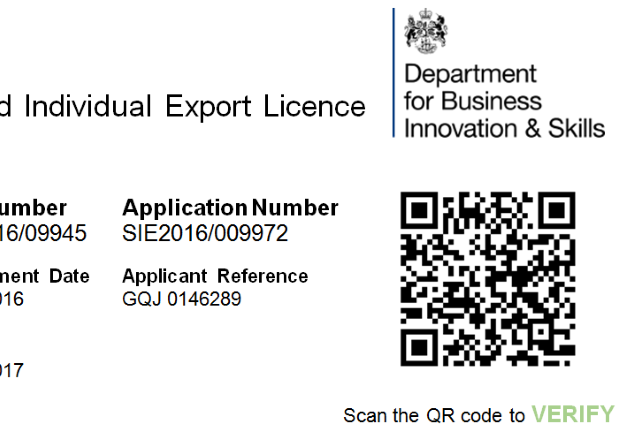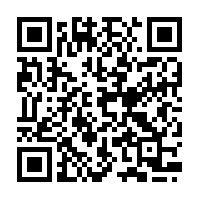
An important aspect of export licensing is the ability of customs officials to check whether goods are being taken out of the UK under a valid licence. This is one of the challenges of the new import/export licensing system; currently paperwork presented to border officials includes a digital signature, and from the research we’ve done so far it’s clear that digital signature is pretty unhelpful when it comes to assessing whether a valid licence exists.
Tightening up the system of licence validation will form a useful part of the One Government at the Border project. Last week our development team cracked their first version of what we hope will prove to be a popular replacement system.
The new licence validation system revolves around something we are seeing more and more of in the real world – QR codes. These are thoroughly clever ‘codes’ in the form of blocky black and white squares, which can be deciphered by an app freely available for any smartphone, taking the user to a URL.
In the case of export licensing, it is planned that the SPIRE replacement will generate a QR code for each licence upon successful registration. This licence will have a URL that the QR code links to, such that any border or customs official can scan the code and be taken either to a valid licence or, in the case of shenanigans, a page showing that there is no valid licence corresponding to that code.
Sample QR codes
This is what our dev team has come up with so far:
- a prototype valid digital licence
- a prototype invalid licence page
You can get to these yourself with a QR code reader on your smartphone. This is the QR code for the valid licence:

And here is the QR code that suggests all is not quite right:

We’ll be testing all this with officials and exporters in the coming weeks to gauge whether this is a convenient and time-efficient method for assessing the validity of exports. Our first hoop to jump through is a demonstration with the EU next week - their buy-in is important given the number of EU borders goods often have to cross on the way to their end user.
It’s user research that has got us to this point, but if you have any suggestions for improvements or think we’re approaching this in the wrong way, please use the comments below to let us know.
5 comments
Comment by ian stott posted on
Hi
Would this mean the QR codes would need to appear on all export documentation the exporter has to raise? Currently the license ref is quoted on the export documemtation so does this now mean the QR code would replace this?
Comment by James Curran posted on
The QR code is there to help border authorities prove that the licence is authentic. We are thinking that we would still use the licence reference but the QR code would be there to prove the authenticity, as there are many doubts about a digital signature on a paper licence. We will be looking to test this with exporters and border agencies and then improve this approach if needed.
James
Comment by Ben Basson posted on
The QR code (or other form of unique identifier on a copy of a licence) will not replace the licence reference, and we do not expect exporters to amend any of their paperwork to include it. UK border authorities, HMRC, etc already have access to information regarding the validity of export licences issued by BIS.
What we are proposing is to alter the licence document issued by BIS to include information (via QR code or other means) that allows you to verify that the licence is valid and extant. This could be useful in a whole range of situations, such as the exporter themselves verifying ongoing validity, as well as foreign border authorities.
Comment by DJAW posted on
You would have to stipulate which documents this was printed on. Many exporters use different documentation. Are you saying should be accompanying the box or on the seperate paperwork handled by the freight agent?
Would be a good idea if all border officers were provided with the device to scan and not rely on them using their own personal phones!
Comment by Ben Basson posted on
This proposal would cover the licence documentation issued by BIS only.